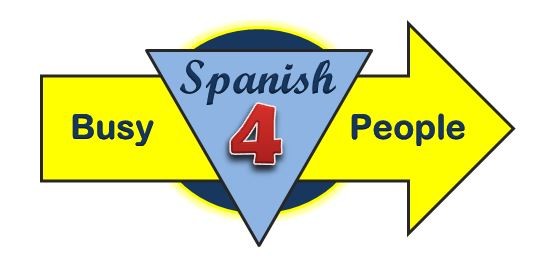Spanish Verbs
Skill Level: Beginner Level
So many Spanish verbs to learn, where to begin? You’ve already begun to learn some, but you’re a little overwhelmed. Verbs, I assure you, are the most important part of any language. They are the action words, the words that give life to your speech. They act as the glue that holds all the other words together in a sentence. Once you identify the verbs in a sentence your ability to understand its meaning jumps up at least 50% in my opinion. I can hear what you’re thinking right now, “But there are so many which ones should I learn first?” Yes, there are a lot, but there certainly is a list that you should focus on to drop in your toolbox in order to increase your ability to understand and communicate.
***DOWNLOAD FREE 25 ESSENTIAL SPANISH VERBS FOR BEGINNERS PUZZLES and receive my free newsletter.
When I started learning Spanish I focused on the basic verbs that were the most useful for everyday situations. We’re not going to look at conjugations right now. So let’s go through the list below.
I. Learn and II. Repeat
Again the first step in learning is to get acquainted with the material being presented. So let’s go over the list below and they are in no particular order. Please understand that there are other essential verbs besides the ones on this list, but you must start somewhere. While you review the list you should repeat them out loud several times to become comfortable with their pronunciation. This will alo the start the process of memorizing them.
25 Essential Spanish Verbs to Learn for a Beginner
| English Verb | Spanish Verb | Reason to learn it. |
| To speak, to talk | Hablar | One of the main communication verbs and most used in the language. You can use it to ask if someone speaks English too, “¿Usted habla inglés?” |
| To listen (to),to hear | Escuchar | Another communication verb and way to confirm a message was received. |
| To understand | Entender | Great confirmation verb to check if you are communicating effectively. |
| To write | Escribir | Again another communication verb and great tool to use when you need something written to help you understand something. |
| To read | Leer | Another communication verb. Can be used to ask someone to say something out loud or simply to follow along. Written language is allows easier to understand. |
| To eat | Comer | One of the most important bodily functions. |
| To sleep | Dormir | Another vital bodily function. |
| To do, to make |
Hacer | One of the most versatile verbs in the language. |
| To like | Gustar | Express what pleases you or you don’t approve of. |
| To open | Abrir | Necessary action to complete multiple tasks. |
| To close | Cerrar | Another necessary action to complete tasks. |
| To need | Necesitar | You always express things that you lack. |
| To say | Decir | Perhaps the most important communication verbs and maybe one of the top three verbs overall. You need to learn new words; therefore, you need to ask how to “say” them. |
| To clean | Limpiar | A normal everyday task. |
| To leave, to go out | Salir | Necessary to talk about when people depart in past, present and future. |
| To go | Ir | Another one of the top used, most versatile verbs. |
| To go in, to enter | Entrar | How else would you ask someone to come inside? |
| To buy | Comprar | You need to purchase things, right? |
| To stop | Parar | Sometimes it’s necessary to end an action. |
| To start | Empezar | Everything has a beginning. |
| To happen | Pasar | You must communicate an occurrence. |
| To end, to finish | Terminar | All good things must come to an end and you should be able to say it. |
| To see | Ver | One of the 5 senses, a verb you will use quite often. |
| *to be | Ser | *Without a doubt, the MOST IMPORTANT VERBS in Spanish. |
| *to be | Estar | Estar and Ser both mean “to be” but are used in different circumstances. (More on this in a future post.) |
III. Practice
You must see them over and over again to truly memorize them. That’s where flashcards will come in handy. Please download and print off the ones I created. If you can recite the verbs without much effort then you have done a fabulous job memorizing them. You will have to practice them several times. There are other ways to practice.
Other Ways to Practice with Spanish Verbs for Beginners
- Read Spanish children’s books. You will see many essential verbs appear often while reading something that you can handle.
- Write to Online Friends. Chatting or just emails are some of the best ways to increase vocabulary since you typically use many of the same verbs multiple times.
- Write to Me. Use the contact information below.
IV. Use
Conversation, conversation, conversation. There’s no real secret here. You want to learn to speak Spanish, then speak Spanish. All the other practice drills are just that- drills to prepare you for the real thing. They help you memorize vocabulary and correct any mistakes. Use these verbs as often as you can.
Please feel free to write to me with questions.
Hablamos pronto,
Rick
